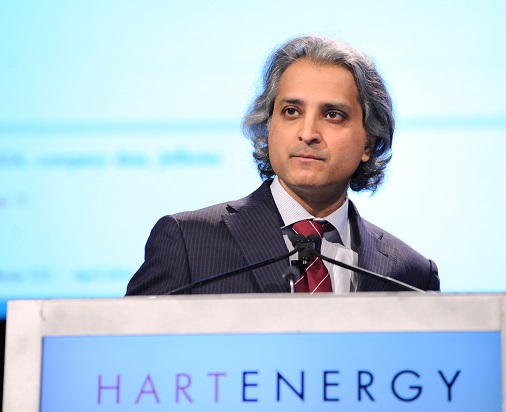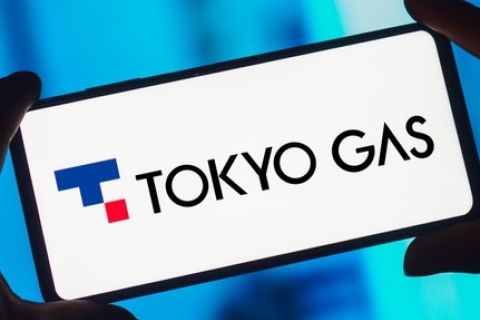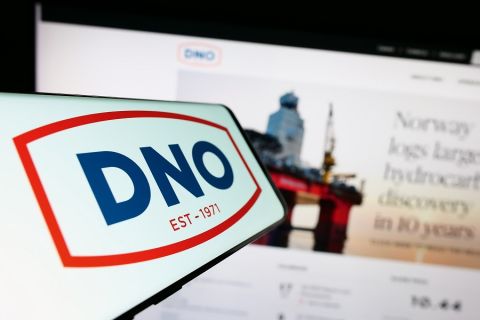Chesapeake Energy Corp. has moved closer to getting overseas pricing for its Haynesville Shale gas, signing a heads of agreement (HOA) on nearly 100 Bcf/year for 15 years beginning in 2027.Chesapeake’s deal is with commodities trader Gunvor Singapore Pte Ltd. and has Chesapeake’s Haynesville gas price indexed to the Japan Korea Marker (JKM), according to Chesapeake’s announcement.
And there could be more deals, according to Nick Dell'Osso, Chesapeake president and CEO. “… We look forward to entering into additional agreements while export capacity continues to come online."
Chesapeake has been waiting to win an investment-grade credit rating to commit to a firm LNG supply contract.
“Chesapeake jumps to the head of the queue among gas independents seeking vertical integrated exposure to global LNG markets,” Subash Chandra, analyst for Benchmark Co., wrote about the agreement.
Upon consummation, Chesapeake will join Devon Energy Corp. and EOG Resources Inc. in direct-sales contracts for a premium price.
Chandra noted that the independent has been teeing up for this next step. “Chesapeake has the gas, firm transport to the LNG corridor [and] an agreement with a global LNG marketer.”
The delivery start is targeted for 2027. It and Gunvor are now looking at LNG facilities at which Gunvor will receive the gas via a “free on board” (FOB) basis, the two companies reported.
Chandra wrote, “Chesapeake may use their assets to push a pre-FID [final investment decision] LNG project across the finish line. They could also take an equity interest in the facility on a pre-FID basis.”
He noted that several—estimated at up to six—LNG projects are anticipated to make their FID this year and “several are delayed, so there are many candidates.”
It might not be exciting news, he added.
RELATED: Chesapeake Energy, Gunvor Sign 15-year LNG Agreement for Haynesville Gas
“The market may not care right now because 2027 is out there, JKM prices are 50% below year-ago levels and [negative,] general gas sentiment.
“But Chesapeake’s pole position should ultimately pay off with JKM exposure and monetization of any LNG stake,” he concluded.
Dell'Osso said that the “agreement reflects the powerful combination of the premium rock, returns and runway of our competitively positioned Haynesville natural gas assets, combined with the strength of our balance sheet and financial position to securely supply global LNG markets.”
Haynesville LNG advantage?
Matt Portillo, analyst for Tudor, Pickering, Holt & Co. (TPH), wrote that it was “good news to see, in our view, as there has been a lot of discussion around upstream participation in global LNG contracting but few deals to show so far for pure-play gas producers.”
What’s been the impediment? “In our view, some of the limiting factors to get deals across the finish line in U.S. upstream have been location of resource—[as] significant low-cost Northeast U.S. inventory remains constrained by pipe—[and] credit quality and the scale of counterparties—[that] precludes most private operators and smaller publics.”

“Chesapeake jumps to the head of the queue among gas independents seeking vertical integrated exposure to global LNG markets.” Subash Chandra, Benchmark Co.
And there is this hurdle too: “Inventory depth to underwrite 10- to 15-year contracts from the Haynesville [is] a constraint for a number of producers in the Haynesville ….”
Like Chandra, he liked the deal. “[It] validates the counterparty- and resource-quality boxes for Chesapeake in our view, and continues to position the company to benefit from a diversified marketing portfolio longer term.”
Meanwhile, Chesapeake continues to work on reaching an investment-grade credit score, according to Mohit Singh, CFO. “We remain actively engaged with the rating agencies,” he said in the company’s earnings call Feb. 22.
The $1.7 billion in after-tax cash it receives upon closing the sale of two of its three Eagle Ford portfolios, plus an additional $450 million in a few years is “considered positive from the rating agency perspective,” he added.
“Overall, what they need to see is just some more seasoning and time and financial policy and financial discipline, which we continue to demonstrate. They like all of that,” he said.
“It’s just more a matter of time and continued engagement. And we remain confident it’s a matter of time until we get to investment rate.”
Recommended Reading
DXP Enterprises Buys Water Service Company Kappe Associates
2024-02-06 - DXP Enterprise’s purchase of Kappe, a water and wastewater company, adds scale to DXP’s national water management profile.
ARM Energy Sells Minority Stake in Natgas Marketer to Tokyo Gas
2024-02-06 - Tokyo Gas America Ltd. purchased a stake in the new firm, ARM Energy Trading LLC, one of the largest private physical gas marketers in North America.
California Resources Corp., Aera Energy to Combine in $2.1B Merger
2024-02-07 - The announced combination between California Resources and Aera Energy comes one year after Exxon and Shell closed the sale of Aera to a German asset manager for $4 billion.
Vital Energy Again Ups Interest in Acquired Permian Assets
2024-02-06 - Vital Energy added even more working interests in Permian Basin assets acquired from Henry Energy LP last year at a purchase price discounted versus recent deals, an analyst said.
DNO Acquires Arran Field Stake, Continuing North Sea Expansion
2024-02-06 - DNO will pay $70 million for Arran Field interests held by ONE-Dyas, and up to $5 million in contingency payments if certain operational targets are met.






